
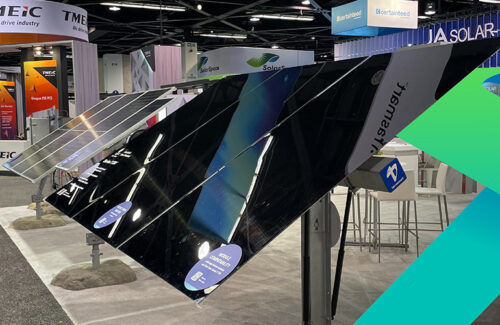
Terrasmart, a turnkey solar bracket supplier, integrates its fixed tilt bracket and TerraTrak 1P single axis tracker (SAT) with First Solar's 7-series TR1 module. By combining ground screws, driven piles, and ballast foundations, Terrasmart and First Solar's partnership can provide domestically produced ground installation products for the US solar market, as these systems are made of 100% American made structural steel and iron and use most domestic components. Customers who use Terrasmart products in conjunction with First Solar Series 7 TR1 can meet the domestic content requirements of the Inflation Reduction Act (IRA). Terrasmart President Ed McKiernan said, "We are very grateful for our long-term partnership with First Solar. Both parties have worked closely together in joint product development and transformation, bringing tremendous mutual benefits to our customers and the entire US solar industry The Terrasmart foundation is specifically designed to cope with different soil conditions, using specialized piles and ballast systems to enable solar energy to be used in a wider range of challenging terrains, climates, and sensitive locations. First Solar has the capability to produce 100% domestically produced modules in the United States. Through their collaboration, Terrasmart and First Solar provide American developers with a clearer and more flexible pathway to earn 10% domestic content reward points, thereby maximizing project savings and return on investment, "said McKiernan Terrasmart focuses on concentrating its SAT integration work on TerraTrak 1P, adjusting its module connection bracket system to secure Series 7 in different positions to meet the project's load requirements. Both companies conducted product testing to ensure that rack and module integration meets reliability and electrical safety standards. Fritz Hittner, an application engineer at First Solar, said, "The collaboration between First Solar and the Terrasmart engineering team provides high-quality, cost-effective installation solutions. Their various ground mounted structures manufactured in the United States enable fast and effective system installation, while focusing on long-term durability in the 1P tracker, fixed tilt, and carport niche markets. We are proud to work closely with Terrasmart to provide innovative solutions that contribute to domestic solar energy and meet the growing energy demand in our country
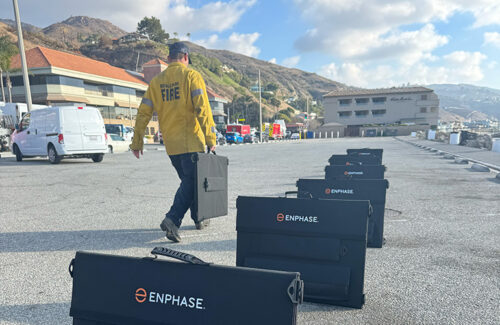
Empowered by Light, a non-profit organization focused on renewable energy, has partnered with Enphase Energy, a global energy management technology company, to provide solar generators for communities recently affected by the Los Angeles fire and firefighting assault teams deployed from the Bay Area to help extinguish devastating fires. These two Bay Area based organizations are distributing 25 Enphase IQ PowerPack 1500s, a portable solar generator with portable solar modules that can be used to charge phones, laptops, radios, lighting, and other small critical devices. More than a dozen solar generators were deployed to the firefighting assault team, providing power to firefighters' radios and mobile phones. Six solar generators have also been distributed to the World Central Kitchen to provide infrastructure support for community centers in low-income communities without electricity. These devices will provide power for lighting and offer free local power for charging mobile phones and other small personal devices. These solar generators will provide much-needed energy and help firefighters and others get rid of diesel generators - which have always been the preferred power source during natural disasters, "said Moira Hanes, Executive Director of Empowered by Light. This effort will help break the negative feedback loop between environmental disasters and fossil fuel based responses Captain Richard Bert, a retired member of the Las Vegas Fire Rescue Team and founder of solar energy and fire education, is helping coordinate the deployment of these devices. He said, "These devices will provide renewable energy and critical communication for frontline assault team firefighters working in areas without or with limited electricity

It is a great honor to introduce the annual conference of the photovoltaic industry, which is a grand event focusing on green energy and innovative technologies. We are in an era of urgent demand for sustainable development, and the photovoltaic industry, as a representative of the new energy field, is leading the trend of future energy development. Firstly, let's review the development of the photovoltaic industry over the past year. The continuous innovation and cost reduction of photovoltaic technology have made solar power generation more popular and feasible globally. According to statistics, the global installed capacity of photovoltaics has exceeded an impressive 10000 GW, equivalent to half of the total global energy installed capacity. This further proves the enormous potential and irreversible development momentum of the photovoltaic industry. One of the purposes of the Photovoltaic Industry Annual Conference is to provide a platform for experts, scholars, entrepreneurs, and government representatives in the industry to exchange and share the latest trends, business models, and innovative technologies. This year's annual meeting will focus on multiple topics, including research and innovation in photovoltaic technology, system design and intelligent control, market trend analysis and policy support. We look forward to promoting further development of the photovoltaic industry through the collision of ideas and sharing of experiences among attendees. In addition to keynote speeches and discussions, this annual conference will also host a series of exhibitions and display activities, providing attendees with a platform to showcase the latest products and solutions. Photovoltaic companies from around the world will showcase their innovative products, advanced technologies, and solutions, further driving the development of the industry and providing more business opportunities. The annual conference of the photovoltaic industry is also a bridge to promote international cooperation and exchange. During the conference, we will invite representatives and experts from different countries and regions to share their successful experiences and best practices in the field of photovoltaics. This will help strengthen communication and cooperation among countries, jointly promoting the development of renewable energy and addressing the challenges of climate change. Thank you to all our partners and attendees for their support and participation. We hope to explore and promote the future development of the photovoltaic industry together here.
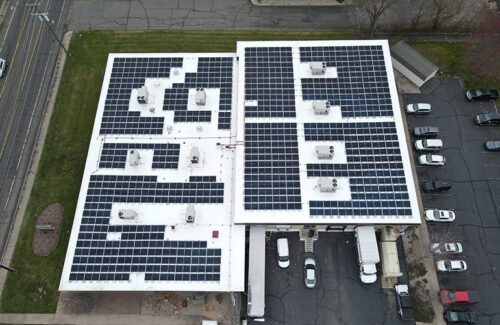
Connecticut Green Bank announced the completion of Commercial Property Assessment Clean Energy (C-PACE) financing for the solar photovoltaic system of Hitchcock Printing and Distribution Services located at 191 John Downey Avenue in New Britain, Connecticut. The system is expected to help businesses save over $1.2 million in energy costs in the next 20 years. The company was founded by Edwin Rogers Hitchcock in 1904 and owns a modern factory covering an area of 21000 square feet, with highly skilled employees and state-of-the-art equipment, providing printing, creative design, finishing, and mailing services. Adding solar energy systems is key to maintaining current and future competitiveness, "said Anthony Braco, President of Hitchcock Printing Company. The most advanced equipment and well-trained young workforce, coupled with plans to manage energy costs, will ensure that we have an advantage in the coming years The 227 kW system was developed and installed by Smart Roofs Energy. Since 2013, C-PACE financing has helped building owners complete over 400 projects, with an estimated energy cost savings of nearly $420 million. C-PACE financing allows commercial real estate owners to immediately install green energy upgrades and pay up to 100% of the cost in installments at low interest rates, with a maximum term of 25 years. Mackey Dykes, Vice President of Financing Projects at the Connecticut Green Bank, said, "We are seeing continued attention from energy intensive businesses seeking ways to reduce the burden of energy costs, especially by increasing solar energy systems. It's exciting when companies like Hitchcock Printing, which have a long history in the community, use green technology to increase profits
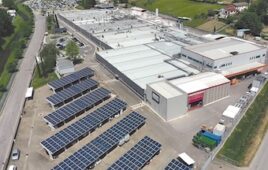
FIMER, an Italian solar inverter designer and manufacturer, has been officially acquired by MA Solar Italy Limited, a subsidiary of McLaren Applied Group. This acquisition enables FIMER to complete the restructuring process and achieve new financial stability through an investment of over $51 million. This significant development enables FIMER to now fully focus on its business development activities and seek growth opportunities. McLaren Applied is a supplier of advanced engineering and technological solutions for multiple fields including motorsports, automotive, and public transportation. The technological synergy between FIMER and McLaren Applied is expected to promote innovation, improve operational efficiency, and support market growth, including entering new fields beyond photovoltaics. McLaren Applied Chairman Nick Fry said, "We are pleased that MA Solar Italy Limited has officially acquired FIMER. FIMER has a leading market position and mature industry influence in inverter design and manufacturing. Most importantly, FIMER has a talented and dedicated workforce, which is its most important asset, similar to the culture and aspirations of our McLaren Applied team. We see that FIMER has complementary developments in many fields, and its future prospects are exciting
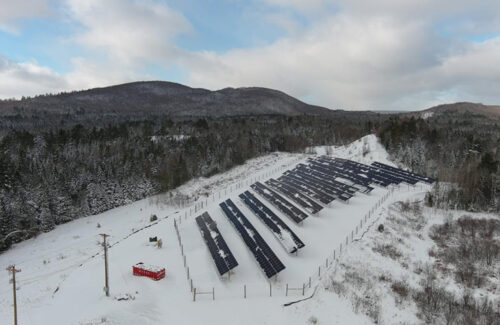
Renewable energy developer Green Lantern Solar has completed the construction of the Brighton solar project located in Brighton, Vermont and has sold the array to Sea Oak Capital. The project is located in a closed area of a family run sand and gravel field, transforming the previously barren land into clean energy. The 500 kW AC solar project provides services to nearby farms, Brighton town, and Newport Ambulance Service Center. Newport Ambulance Service Center is a non-profit regional ambulance service center covering 18 towns in three counties. David Carpenter, Vice President of Development and Chief Legal Officer of Green Lantern Solar, said, "This project embodies our mission of providing clean energy, providing a generational source of income for landowners, supporting local businesses, and revitalizing underutilized space. We not only have the opportunity to develop this project, but also help landowners fully comply with existing land use permits in the process. We are pleased to see the entire commercial ecosystem surrounding this project thriving under the management of Sea Oak Capital Green Lantern has sold over six Vermont solar projects to Sea Oak Capital. Dan Poydenis, CEO of Sea Oak Capital, said, "Community solar projects are the cornerstone of our growth strategy. Our partnership with Green Lantern Solar has consistently achieved significant results, supporting Vermont's renewable energy goals while bringing meaningful energy cost savings to local businesses
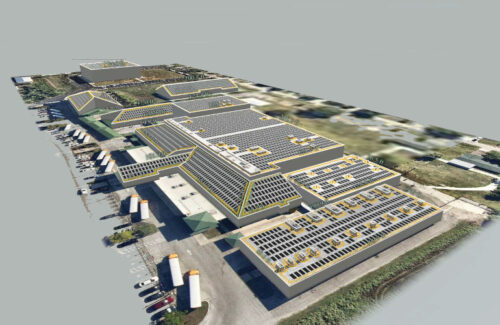
Renaissance Arts and Education (RAE), Tampa Bay Solar, and Regenerative Shift will collaborate at a bilingual elementary school in Palmetto, Florida. HOLA! Elementary is carrying out a 2 MW rooftop solar project located on the Manatee Art School campus in RAE. The project is planned to be put into use in the summer of 2025. The project aims to seek domestic component incentive credits within the IRA. In addition, as a 501 (c) (3) non-profit organization, RAE will utilize the IRS selective payment provision, which allows tax exempt organizations to directly receive full clean energy tax credits paid directly by the IRS. Manati Art School has long been an advocate for innovation and sustainable development, and this project strengthens the school's commitment to environmental management and operational efficiency. By investing in solar energy, RAE will significantly reduce its carbon footprint, lower long-term energy costs, and set an example for schools and non-profit organizations nationwide. This project demonstrates how non-profit and education sectors can lead sustainable development, "said Dr. Charles Jones, President of RAE and founder of Manatee School For the Arts. By partnering with Tampa Bay Solar and Regenerative Shift, we are proud to implement this transformative clean energy solution that benefits our students and the planet in an economically efficient manner Tampa Bay Solar will be responsible for overseeing the design, engineering, and installation of a 2 MW system. Environmental consulting firm Regenerative Shift will guide RAE through the complex process of obtaining federal tax benefits and ensuring compliance with IRA requirements. The collaboration with RAE is of great significance to me, "said Steve Rutherford, owner of Tampa Bay Solar. This is an opportunity to give back to the community and showcase the power of solar energy to the next generation of leaders - not just as a technological solution, but also as a core value of environmental management Caleb Quaid, President of Regenerative Shift, added, "This project demonstrates how tax incentives can be used to drive the development of renewable energy projects. It sets an example for other non-profit organizations and businesses on how to benefit the environment while reducing operating costs
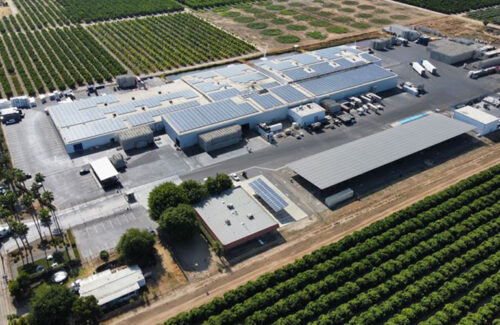
EQT announced that EQT Transition Infrastructure has agreed to acquire Scale Microgrids from Huaping Investment and other existing shareholders. Scale Microgrids is a developer, acquirer, owner, and operator that provides microgrids and distributed energy resources to commercial and industrial, electric vehicle fleets, data centers, municipal, university, hospital, and agricultural customers, developers, and communities. Scale is headquartered in Ridgewood, New Jersey, and its investment portfolio includes approximately 250 megawatts of operating and under construction assets, with an additional 2.5 gigawatts planned for the near future. Scale has deployed various technologies, including solar energy, battery storage, natural gas generators, fuel cells, and cogeneration, and its investment portfolio is one of the largest pure microgrid investment portfolios in the United States. This transaction is the first North American investment in EQT's recently launched "Transition Infrastructure" strategy, which aims to expand business scale and drive the transition to a clean energy and resource efficient circular economy. In December 2024, EQT announced the launch of this strategy and made its first investment in battery energy storage system developers and operators niz Energy。 Scale Microgrids CEO Ryan Goodman said, "Today marks an exciting new chapter for our company. EQT brings rich experience, resources, and capital, which will enable us to continue pursuing our vision of powering the world with distributed energy. I am immensely proud of the achievements our team has made and believe that this transaction will enable us to bring more opportunities to our customers, employees, and the communities we serve This transaction must meet the standard conditions and obtain approval. EQT's consultants include Weil, Gotshal&Manges (legal) and Guggenheim Securities (finance). Scale Microgrids' advisors include Latham&Watkins (legal), Nomura Greentech (finance), and Truist Securities (finance).
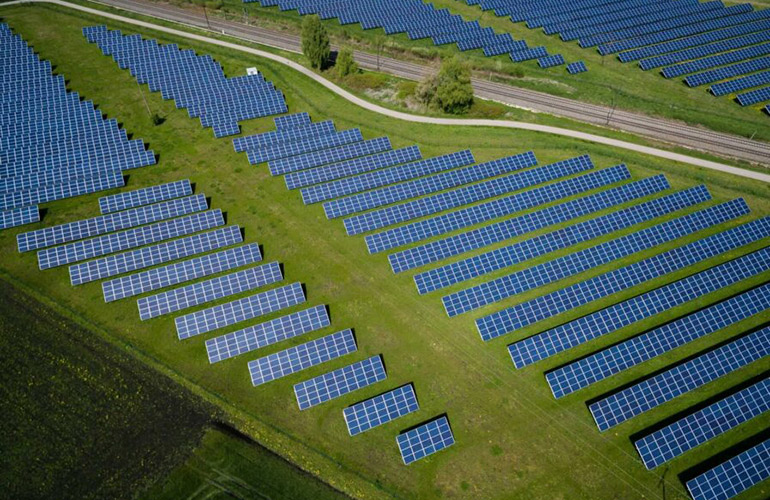
Although it has been a turbulent year for solar energy in the United States, as 2024 draws to a close, it is important to remember that the industry has achieved some truly huge victories. After experiencing many ups and downs, approvals, and rejections, photovoltaic advocates around the world have reason to celebrate many successfully implemented initiatives that help accelerate the development of solar energy and increase opportunities for communities across the country to access low-cost renewable electricity.
Categories
New Products
Tin Roof Rapid Solar Mounting System with Hanger Bolt Read More
Residential Small Solar Easy Bracket Kit for Home Balcony Read More
Automatic Single Pile Solar Tracker with 10 PV Panels Read More
Angle Adjustable Aluminum Easy Solar Panel Bracket for Garden Read More
Intelligent Single Post Dual Row Solar Tracking System Read More
5000ES Solar Off-Grid Energy Storage Inverter Supplier Read More
Multi Drive Double-Sided Single Axis Tracker System Read More
© Copyright: 2025 Xiamen Wintop New Energy Tech Co., Ltd.. All Rights Reserved.

IPv6 network supported
Friendly Links:
Integrated Solar System